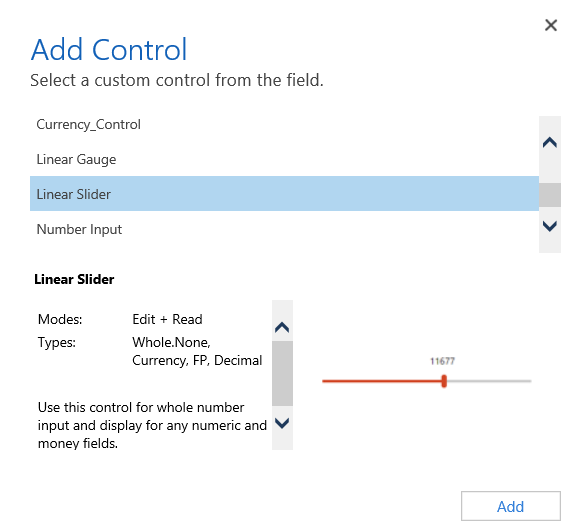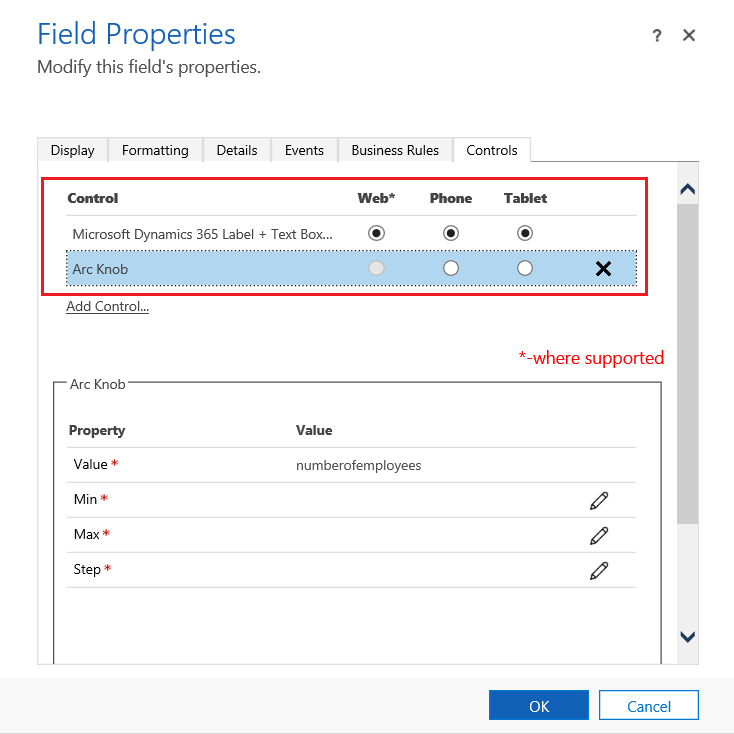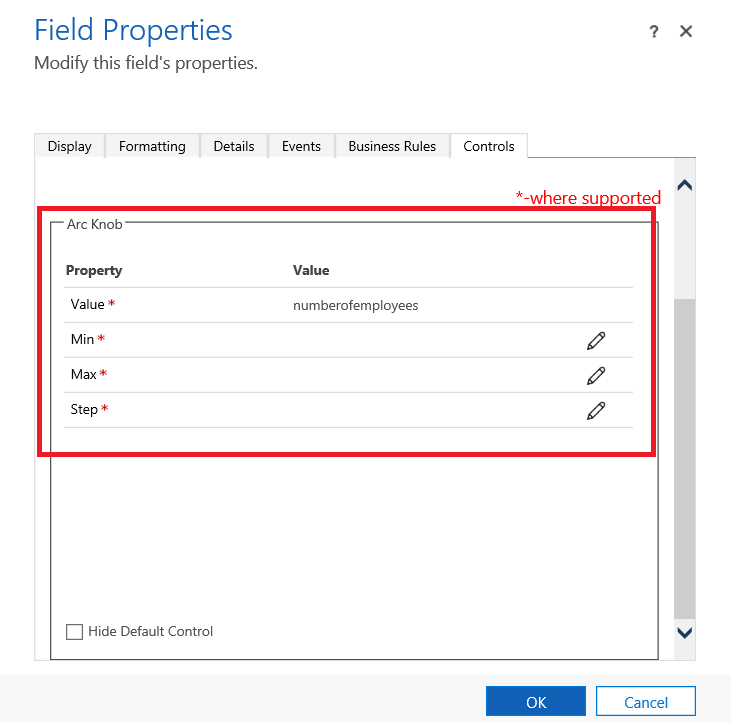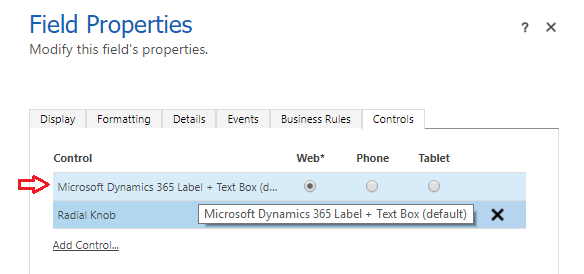Use custom controls to transform text fields into data visualizations
This topic applies to Dynamics 365 Customer Engagement (on-premises). For the Power Apps version of this topic, see: Use custom controls for model-driven app data visualizations
Custom controls let you transform fields that traditionally contain text into visualizations. Similarly, you can use custom controls to transform datasets, such as a view, to display in a more visual rendering rather than a list of records. Custom controls can appear as visualizations on forms, dashboards, views, and homepage grids. You can set one type of custom control to appear in the web browser client while having a different custom control appear in your Dynamics 365 Customer Engagement (on-premises) phone or tablet mobile apps. For example, you could use a number input custom control for a field in web browser clients and a slider custom control for the phone app. After the customization is published, users can fully interact with the control to change the value, such as by sliding the control when using the linear slider custom control. Changes are automatically saved when the form is closed just as they are when the user changes a traditional field on a form.

Use a custom control to add visualizations to a field
Following the steps in this procedure will change the default label and text box field of the Budget Amount field to the slider custom control on the Opportunity entity. You can use similar steps to replace an existing field with a custom control or configure a custom control for a custom field.
Open solution explorer.
Expand Entities, expand the entity that you want, such as the Opportunity entity, select Forms, and then open a form such as the Main form.
In the form editor, double-click the field where you want to add a custom control, such as the Budget Amount field on the opportunity main form. Alternatively, you can create a custom field.
On the Field Properties page, select the Controls tab, and then select Add Control.
On the Add Control page, select the control that you want, such as the Linear Slider control shown here, and then select Add.

Choose the client where you want the control to appear.
Web. To make the custom control available from any web browser, select the Web option next to the control. Notice that setting the Web option includes rendering the control in web browsers on PCs, Macs, and mobile devices.
Phone. To make the custom control available on phones running Dynamics 365 for phones, select the Phone option next to the control.
Tablet. To make the custom control available on tablet devices running Dynamics 365 for tablets, select the Tablet option next to the control.

Select the
 pencil icon next to Min, Max, and Step, set the property option described below, and then select OK.
pencil icon next to Min, Max, and Step, set the property option described below, and then select OK.
Min. Set the minimum accepted value. You can bind a static value that you enter or bind the value to an existing field. In this example Bind to static value is Currency and the minimum value that can be entered is zero.
Bind to a static value. Select the data type, such as a whole number (Whole.None), currency, floating point (FP), or decimal. Next, enter a number that represents the minimum accepted value for the field.
Bind to values on a field. Select a field from the list that will be used as the minimum accepted value.
Max. Set the maximum accepted value for the field. Similar to the Min value, you can bind a static value that you enter or bind the value to an existing field as described earlier. In this example, Bind to static value is Currency and the maximum value that can be entered is 1 billion.
Step. This represents the unit to increment or decrement when adding to or subtracting from the current value. For example, for budget amount you can select 100 dollar increments\decrements.
Hide Default Control. Selecting this option hides the control so neither the control or the data is displayed in any of the clients that don't support the custom control. Notice that the classic Dynamics 365 Customer Engagement (on-premises) web client doesn't support most custom controls. By default, this option is not selected and the classic Dynamics 365 Customer Engagement (on-premises) web client displays the default, typically text based, control.
Note
The default control is identified with (default) following the control name.

Select OK, to close the Field Properties page.
To activate the customization, on the entity form select Save, and then select Publish.
Select Save and Close to close the form editor.
See the custom control in action
Open a record that includes the field with the custom control, such as the Opportunity form from the previous example, and view how the field is changed.

The field is now rendered as a slider control instead of the text field.
See also
Create and edit views
Customize Dynamics 365 for phones and tablets
Make grids (lists) editable in Dynamics 365 Customer Engagement (on-premises) using the Editable Grid custom control
Feedback
Coming soon: Throughout 2024 we will be phasing out GitHub Issues as the feedback mechanism for content and replacing it with a new feedback system. For more information see: https://aka.ms/ContentUserFeedback.
Submit and view feedback for